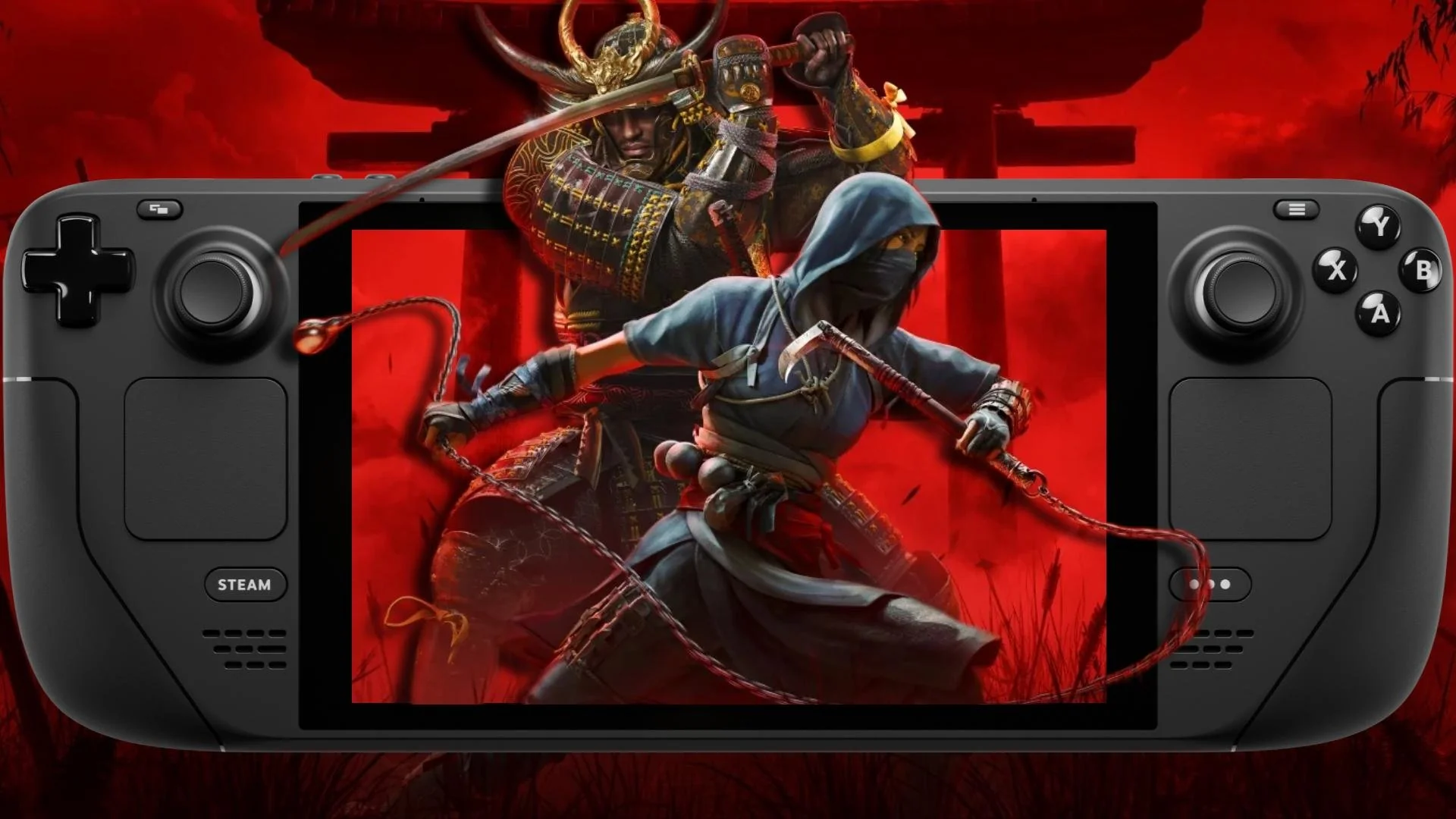When Ubisoft declared that Assassin’s Creed Shadows would be Steam Deck verified, many gamers responded with doubt. Previous experiences with “verified” titles often fell short of expectations on Valve’s portable device, particularly for graphically intensive AAA releases. Given that Assassin’s Creed Shadows was developed for modern consoles with demanding visual requirements, concerns about its viability on the Steam Deck seemed justified.
The concept of running such a visually complex game on a handheld appeared almost unrealistic. Immediate worries focused on graphics quality, frame rate consistency, and overall user experience. However, these concerns were rapidly addressed upon actual testing. Ubisoft appears to have invested considerable effort in optimising the experience, and whilst not flawless, the game delivers remarkably good performance on the Steam Deck—exceeding what many anticipated.
Performance and Visuals That Impress
Despite occasional performance challenges, gameplay maintains a surprisingly fluid experience. Principal characters such as Naoe and Yasuke preserve their console-quality appearances, whilst the open world retains its immersive qualities. Frame rates consistently maintain approximately 30 FPS even during combat sequences, which represents impressive performance for a portable gaming experience. The game continues to showcase expansive landscapes and dynamic environmental effects, delivering a faithful representation of the full-scale version.
The testing was conducted on a 512GB LCD model of the Steam Deck. Users with the newer OLED version might experience slightly enhanced results due to the upgraded display and improved contrast ratios.

Ready-to-Play Optimised Settings
One significant advantage Assassin’s Creed Shadows offers on the Steam Deck is its level of pre-configured optimisation. Unlike many games that launch with default low settings requiring player adjustments, this title arrives with settings specifically tailored to the device. Most options are fixed, minimising the need for fine-tuning. This approach resembles console gaming, where users aren’t expected to adjust individual graphics parameters.
Some adjustable options remain available, including field of view and screen aspect ratio. Decreasing the field of view can provide a slight performance improvement without negatively impacting gameplay. The game supports the Steam Deck’s 16:10 resolution, but switching to 16:9 might offer a few additional frames—though at the expense of visual immersion. For OLED model users, maintaining the full screen aspect is particularly rewarding.
The Frame Generation Advantage
Frame Generation represents another notable feature. Enabling this technology can boost frame rates by up to 20 FPS by generating synthetic frames. Whilst this may introduce minor visual artifacts—particularly during cutscenes—the added smoothness is noticeable. The compromise is a fluctuating frame rate rather than a consistent 30 FPS, so players should experiment with both settings to determine their preference.
Noticeable Limitations
Despite the overall strong performance, Assassin’s Creed Shadows makes some evident compromises. Loading into the Animus menu can trigger severe stuttering, and reconnecting to Ubisoft Connect may be necessary after changing devices—though that’s more of a software inconvenience than a hardware limitation.
Cutscenes represent the most significant performance weakness. Frame rates can decrease to approximately 20 FPS during these sequences, making them less smooth than actual gameplay. Fortunately, audio remains synchronised and visual quality stays largely intact. These moments don’t match console performance, but they don’t substantially impact the core gameplay experience.
During active gameplay, however, performance returns to a robust and stable state. Whether participating in large-scale conflicts or stealth missions, frame rates rarely drop below the expected 30 FPS. Frame Generation can increase this to around 40 FPS, occasionally reaching 50 FPS. Whilst crowded scenes can make aiming and interpreting enemy signals more challenging, these represent minor inconveniences rather than serious problems.

Visual Quality Remains Strong
Even with graphical compromises, Assassin’s Creed Shadows maintains an impressive visual identity. Environmental details, character designs, and customisation elements are preserved to a remarkable degree. The only apparent reduction in visual quality occurs when dynamic resolution reduces detail in densely populated areas, causing distant enemies to appear less defined. Otherwise, the game looks sharp and clear, comparable to other scaled-down console ports like The Witcher 3 on the Nintendo Switch.
Is the Steam Deck Viable for Assassin’s Creed Shadows?
There’s no question that Assassin’s Creed Shadows was designed for more powerful systems. Console or PC players will experience enhanced detail and smoother cutscenes. Connecting the Steam Deck to an external display won’t resolve its performance limitations, as the hardware is already maximised in handheld mode.
Nevertheless, for those considering the Steam Deck as a primary platform for the game, the experience exceeds basic expectations. The text and interface are well-adapted to the screen, gameplay sessions feel natural whilst mobile, and cloud saves enable seamless transitions between devices. This positions the Steam Deck as an excellent secondary device or even a primary platform for casual sessions, particularly for players who prioritise convenience and portability.
Final Thoughts
Initially, expectations for Assassin’s Creed Shadows performing well on the Steam Deck were low from both Ubisoft and players. However, the final product has surprised many. Despite some cutscene performance issues and reduced visual fidelity, the fundamental gameplay remains engaging and fluid. For those undertaking the game’s extensive campaign, the Steam Deck version proves to be an unexpectedly enjoyable way to experience the adventure whilst on the move.
